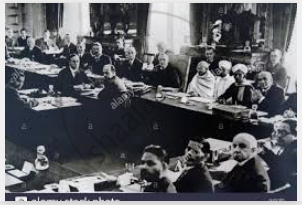Advertisements
Advertisements
Question
Explain the background behind the establishment of Indian National Congress with the help of following points.
- Centralisation of administration
- Economic exploitation
- Western education
- Study of Ancient Indian History
- Role of newspapers
Solution
The Indian National Congress was considered to be the largest and most prominent Indian public organization. It is also the central and defining influence of the long Indian Independence Movement
A.O. Hume, a retired British officer, led its foundation on 28 December 1885. The establishment of INC passed through several phases.
- Centralization of administration:
-
The Britishers established a centralized administrative system and executed uniform policies in India.
-
They focused on the principle that all people would have equal status before the law, irrespective of religion, class, and caste.
-
All Indians became subject to the common rule, and the feeling of unity among Indians grew stronger.
-
Themeans of communication, such as railways and roads in India, to protect and promote the interests of the British empire turned out beneficial for Indians also.
-
They enabled the Indians living in the different provinces to develop contacts with one another and thereby strengthened the feeling of national unity.
-
- Economic exploitation:
-
The Indian economy under the British Raj from 1858 to 1947 was not a developing sector.
-
During this period, the Indian economy basically remained stagnant. India experienced deindustrialization during this period.
-
India during the British colonial era can be featured with a lower per-capita income, a great decline in the secondary sector, and lower levels of urbanization.
-
India went back in the world market, and the common workers suffered for it. They got low wages, and they were exploited by the landlords. The landlords were just the tools of the British.
-
- Western education:
-
The British East India Company was not interested in the development of the education system in India because their prime motive was trading and profit-making.
-
To rule in India, they planned to educate a small section of upper and middle classes to create a class who are “Indian in blood and colour but English in taste.”
-
The educated class were to act as interpreters between the government and the masses. This was also called the “downward filtration theory.”
-
- Study of Ancient Indian History:
-
Western education opened up new horizons for Indians. They began reading, and that led them to explore more on Indian tradition and culture.
-
The people who became aware of the exploitation of British rule made others conscious of the need to achieve freedom.
-
The study of ancient Indian history made changes in the mindset of people, and they began to praise India's immense tradition, which should not be kept under the control of the British.
-
The Congress leaders initiated and influenced people in all ways.
-
- Role of newspapers: The freedom of the press and newspapers were not allowed in India under British rule. The following acts controlled the spread of news in India.
- Censorship of Press Act, 1799
- Licensing Regulations, 1823
- Press Act of 1835 or Metcalfe
- Licensing Act, 1857
- Registration Act, 1867
- Vernacular Press Act, 1878
- Newspaper (Incitement to Offences) Act, 1908
- Indian Press Act, 1910
But later, after the beginning of nationalist waves, the British could not defend the attempts of the educated leaders to make people know about the social actions. Freedom of the press was of utmost importance as it was a powerful tool to spread political ideas.
Many newspapers emerged during these years under distinguished and fearless journalists. These included:
- The Hindu and Swadesamitran under G. Subramanya Aiyar,
- The Bengalee under Surendranath Banerjee,
- Voice of India under DadabhaiNaoroji,
- Amrita Bazar Patrika, under Sisir Kumar Ghosh and Motilal Ghosh,
- Indian Mirror under N.N. Sen, Kesari (in Marathi)
- Maharatta (in English) under BalgangadharTilak,
- Sudharak under Gopal Krishna Gokhale, and
- Hindustan and Advocate under G.P. Verma.
Thus, the Indian national congress came to an establishment because of the necessity of freedom from the British. The ill-effects of centralized British administration and economic exploitation lead to social decay. The emergence of an educated class made new ideas among people and leaders come up. The research on Indian tradition made people proud of their own country, and they united. The newspapers, which were owned and prepared fearlessly by Congress leaders, supported the freedom-ideas of the common man. Thus, INC was formed in 1885. It was a need of that period.
APPEARS IN
RELATED QUESTIONS
The Servants of India Society was founded by ______ .
The first session of Indian National Congress was held at ______ .
Explain the following statement with reason.
Lord Curzon decided to partition Bengal.
Write a short note.
Anti Partition Movement
Write a short note.
Four-point program of Indian National Congress.
State whether the following is true or false:
Racial arrogance and racial discrimination by the British caused great resentment among Indian intellectuals.
Answer the following question in one or two words/ sentences:
Define nationalism
Answer the following question in one or two words/sentences:
How did the British economic policies in India transform India into an agricultural colony?
Look at the picture given below and answer the following question.

Which conference is in progress?
Look at the picture given below and answer the following question.

What was the result of this conference?
